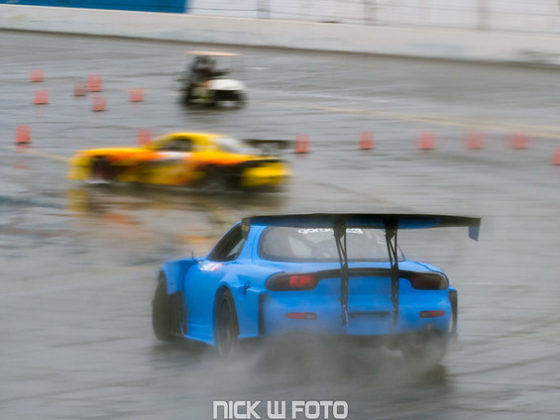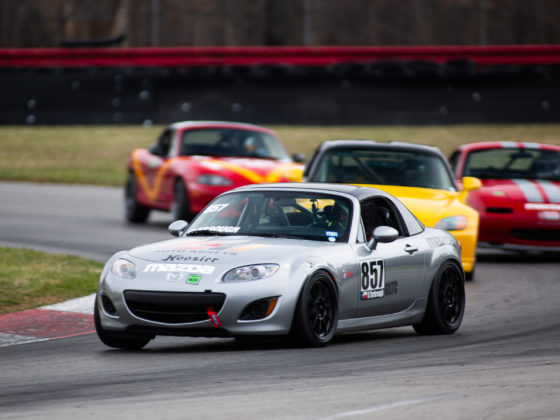
We are using Comp Cams shaft roller rockers. We have found that conventional rocker arms when subjected to pro drifting stress often tilt and fall out of position hitting the retainers, knocking off the keepers and causing the valve to drop usually destroying the engine. With shaft rockers, this is not possible as the rockers pivot off of a fixed shaft. On an LS engine, the stress of the individual rocker can sometimes cause the head to crack where the rocker pedestal is near the intake port ruining the head. CNC ported heads like we are more prone to this as the porting thins out the material in this area making it weaker. Shaft rockers spread the stress out over several valves.

Comp’s shaft rockers pivot on needle bearings to reduce friction and the rocker tips are rollerized to reduce side load on the valves. The rocker body is CNC machined out of billet aluminum. A lot of pro drift cars uses steel roller rockers for the ultimate in strength but for this one notch back demo engine that has to live a long time, we prefer aluminum because it has shock absorbing properties. The reduction in friction also means that the roller rockers contribute a lot less to oil temperature. People don’t realize it but valvetrain friction can produce as much as 50% of the total heat the oil must dissipate in the engine! A roller cam and roller rockers can go a long way in reducing this heat.

We also used Comp Cams heavy-duty roller chain cam timing set. This allows us some adjustability of the cam timing. The set comes complete with the chain, sprockets, drive hub and oil slinger.

For an intake, we used a FAST high HP runner intake manifold. The high HP version of the FAST intake manifold has a bigger plenum volume and larger diameter runners. The FAST intake manifold is made of an advanced polymer material that doesn’t conduct heat very well. This helps keep the intake charge cool as well as being lighter than cast aluminum. The manifold also has integrated nitrous bungs and molded in bolt locations and vacuum ports to work with all of the factory accessories. Best of all, the FAST intake manifold is 50 state legal with a CARB EO number.

Another cool feature is that the FAST manifold is a modular design with intake runners that are removable. There are 3 optional length and diameter runners available so you can tune the manifold for your engines desired powerband. The removable runners can be easily ported and customized if you desire as well.




7 comments
Do you think using thermal paste (ala CPUs) would help increase heat transfer on the main bearings?
Might aid in bearing spinning. Usually, engine builders advocate a tight fit on the main saddle for best heat transfer.
it won’t one bit: It will just desolve in oil. Let alone the chunks that get stuck at the oil pickup or the bearings. It just will not work if you really want to remove heat: Graphite paper. Bit that will nog keep the bearing in place. A graphite-silicon based sealer will most likely transfer heat a little less, but will be more resillient to spinning bearings.
Then again: Bearings normally won’t spin that much, unless there are either opposing forces ( flat 4’s for instance) or when the stroke gets to large compaired to the connecting rod. It isn’t so much extra power as it is the rod stroke length.
Mike – any thoughts on using a stock 4.8 crank to reduce the stroke and increase the rod length?
For a road racing or circle track car sure. A drift car needs grunt so I don’t think I would ever destroke one. Mange rod ratio, yes but not destroke. For Dai Yoshihara’s engines, I run a big 4.250 stroke for grunt but also run a super long 6.350 rod with a tall deck block. This gives a stroke to rod length ratio of 1.494:1 which is within the realm of OEM production engines yet still packs a bunch of displacement into a small package. One of our older blocks with a big bore gives us 477 cubic inches!
Mike – What is the best roller rocker / shaft roller rocker option for a stock ls3 head?
For drifting with lower rpm, probably Crower.